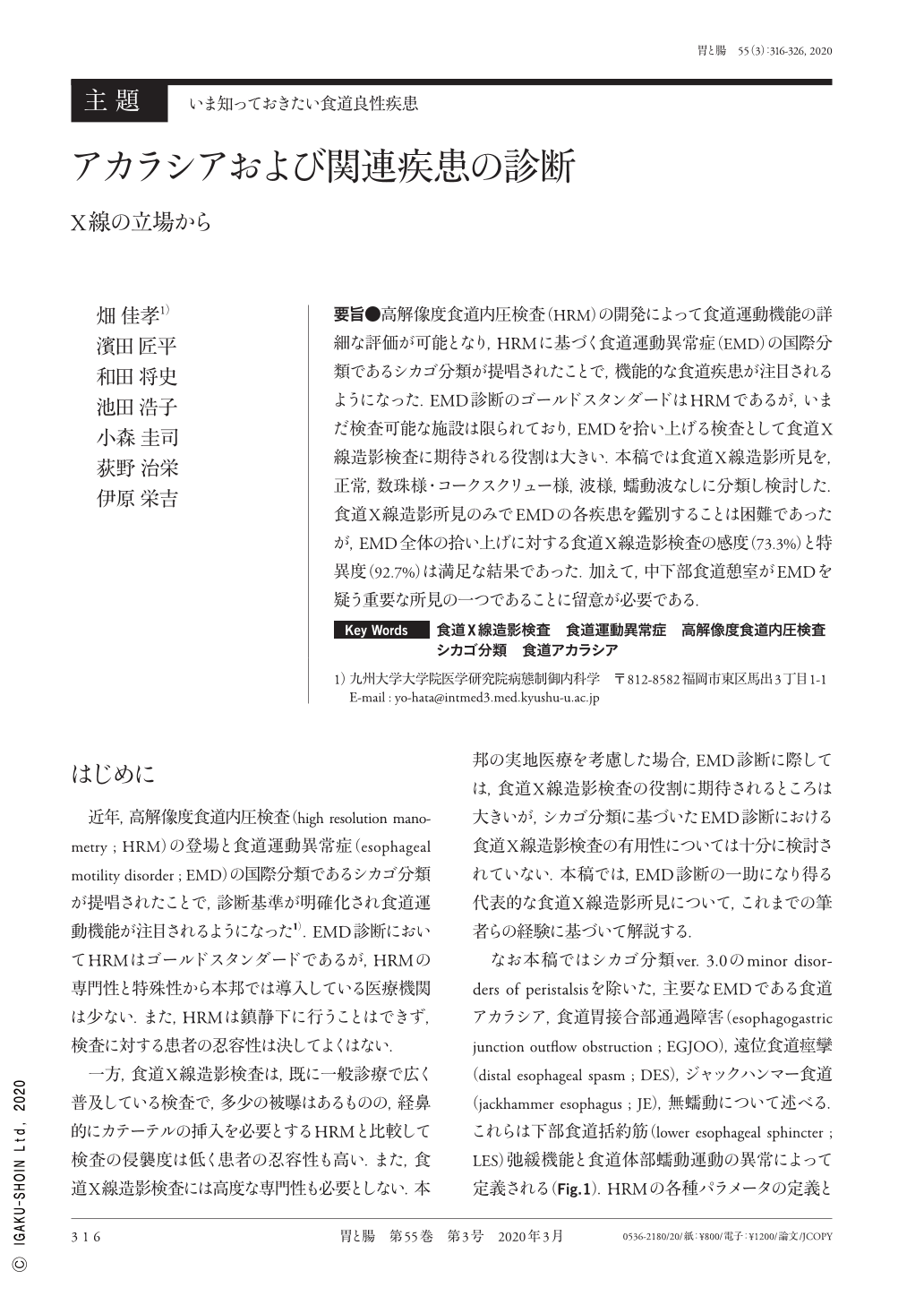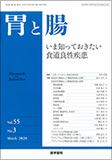Japanese
English
- 有料閲覧
- Abstract 文献概要
- 1ページ目 Look Inside
- 参考文献 Reference
- サイト内被引用 Cited by
要旨●高解像度食道内圧検査(HRM)の開発によって食道運動機能の詳細な評価が可能となり,HRMに基づく食道運動異常症(EMD)の国際分類であるシカゴ分類が提唱されたことで,機能的な食道疾患が注目されるようになった.EMD診断のゴールドスタンダードはHRMであるが,いまだ検査可能な施設は限られており,EMDを拾い上げる検査として食道X線造影検査に期待される役割は大きい.本稿では食道X線造影所見を,正常,数珠様・コークスクリュー様,波様,蠕動波なしに分類し検討した.食道X線造影所見のみでEMDの各疾患を鑑別することは困難であったが,EMD全体の拾い上げに対する食道X線造影検査の感度(73.3%)と特異度(92.7%)は満足な結果であった.加えて,中下部食道憩室がEMDを疑う重要な所見の一つであることに留意が必要である.
Recently developed HRM(high-resolution manometry)has enabled us to evaluate esophageal motility in detail. As a result of the Chicago classification, EMD(esophageal motility disorders)have been recognized in clinical practice. Although HRM is the gold standard for EMD diagnosis, it is not yet widely used and is available in only few specialized hospitals in Japan. Therefore, BE(barium esophagram)is expected to play a role in screening for EMD before performing HRM. In this study, we aimed to determine the usefulness of BE in EMD diagnosis by focusing on findings, such as rosary beads, corkscrew appearance, wave appearance, or absent peristalsis. Although the findings of BE were insufficient to classify EMD into specific disorders, the sensitivity and specificity of BE for the general diagnosis of EMD was 73.3% and 92.7%, respectively. We conclude that BE could play a significant role in identifying EMD. In addition to these findings, identification of diverticula of the middle or lower esophagus is another important benefit of using BE for EMD screening.

Copyright © 2020, Igaku-Shoin Ltd. All rights reserved.


